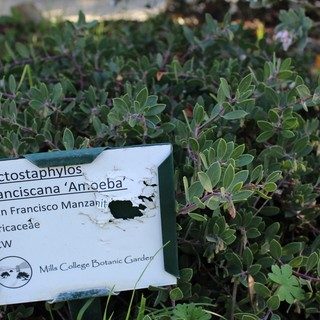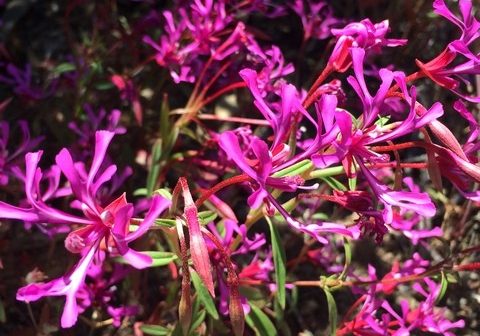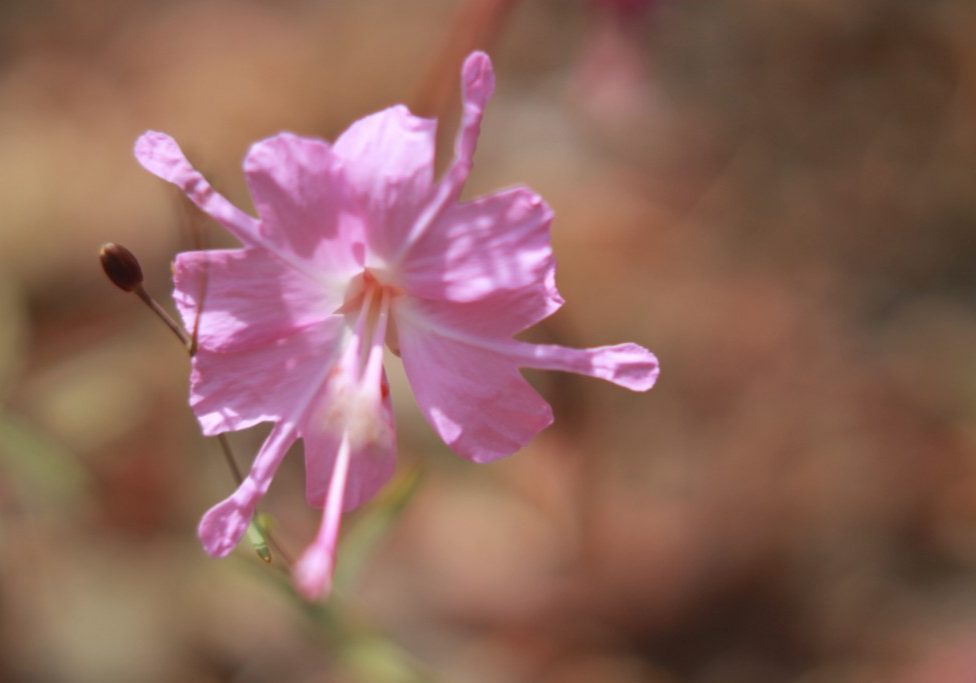The Botanic Garden and Research Greenhouse
The Botanic Garden serves as a living laboratory for Mills classes and for students interested in plants beyond the classroom. When I arrived at Mills College, I inherited a Garden that had lapsed into semi-chaos. With the help of dedicated students and staff who volunteer their time and physical labor, we are revitalizing this wonderful resource for the College. Check back periodically for photos of our progress.

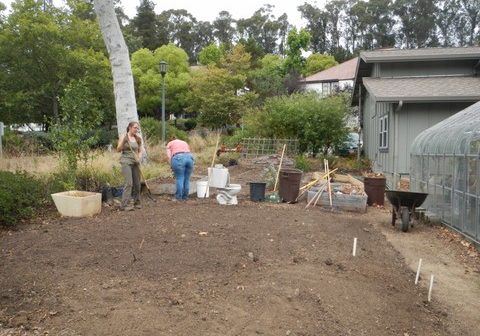
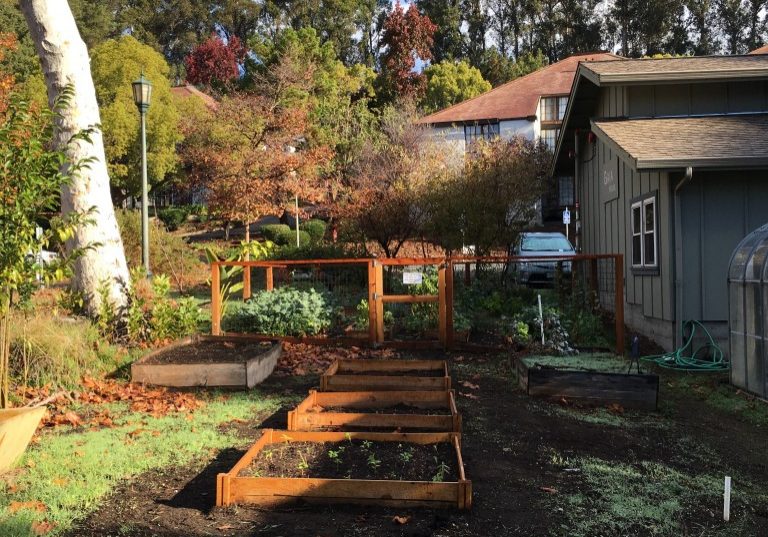
The western edge of the Botanic Garden before (left), during (center) and after (right) we began the restoration effort. The small beds in the foreground have recently been planted by students for their own projects, including a milkweed garden for monarchs. The newly fenced area in the back is our edible garden. All students who volunteer in the Botanic Garden are welcome to harvest from it.
Research opportunities for students
There are many research opportunities (in the field and lab) for students to who are interested in evolutionary ecology or rare plant conservation. If you are interested in joining us, talk to me or to any member of my research team.
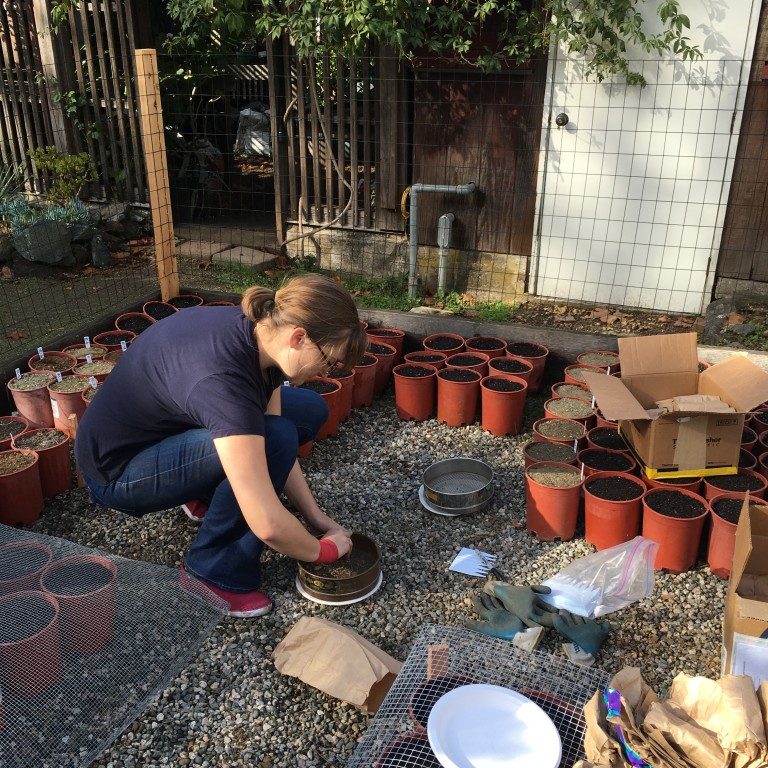
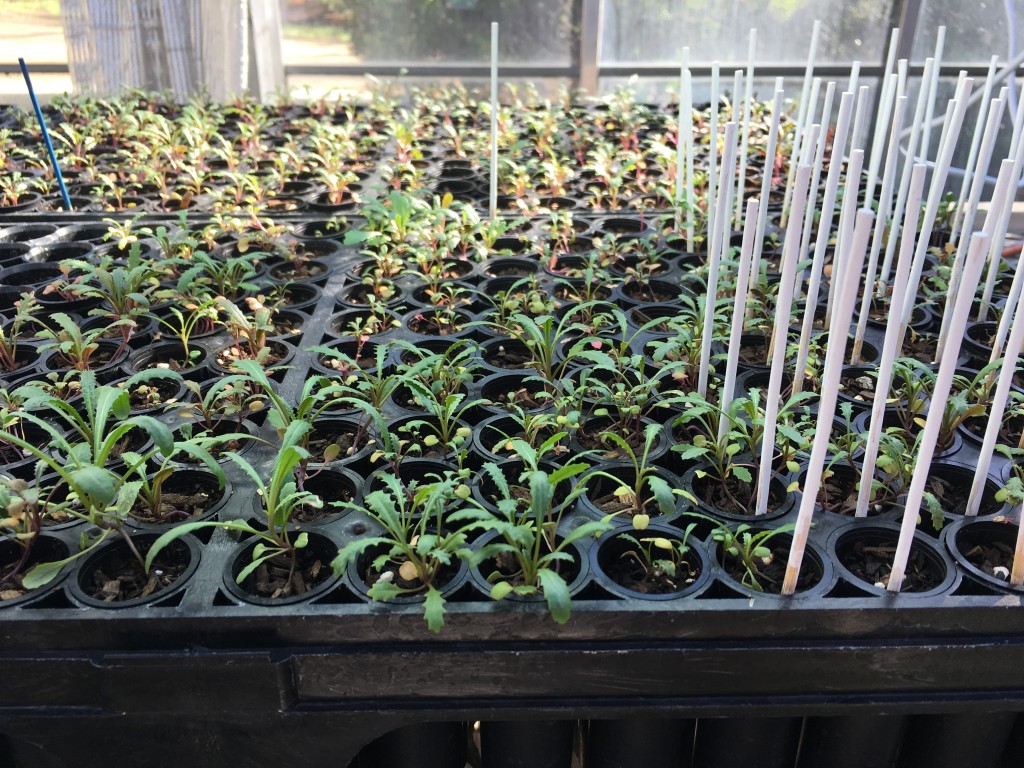
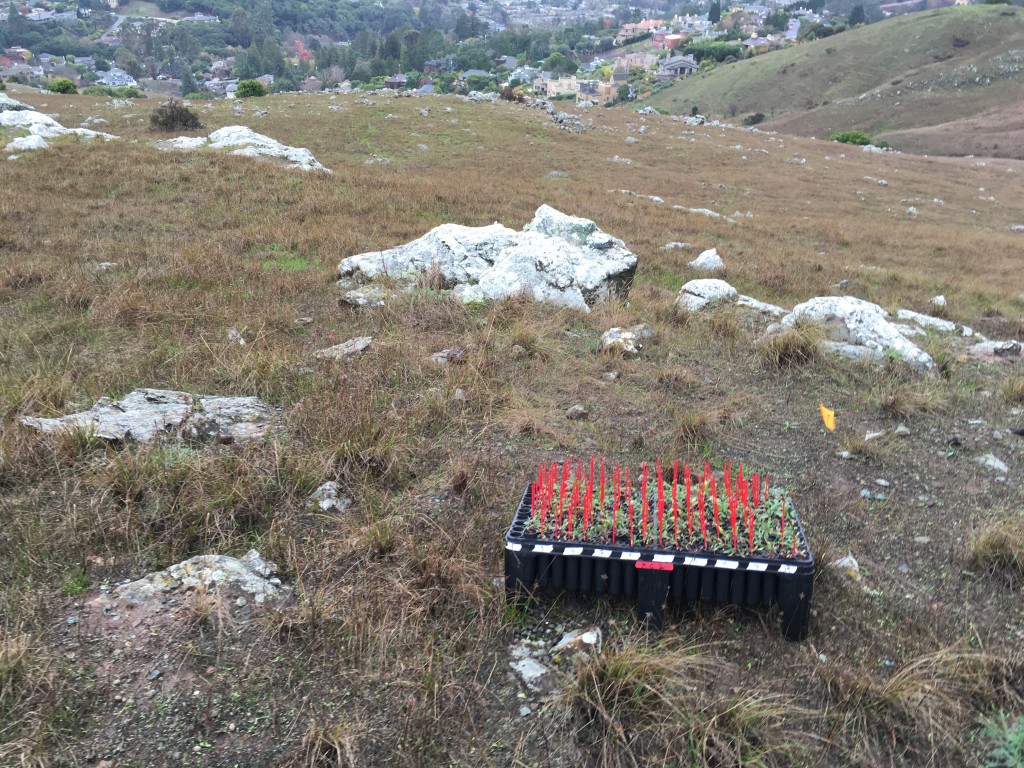
Above left: Devon preparing to plant out soil from our research sites to determine if it contains any dormant seed of the critically endangered Tiburon jewelflower (Streptanthus glandulosus ssp. niger). Above center: seedlings of the Tiburon jewelflower to be planted in the field for an experiment led by Brittany Burnett. Above right: jewelflower seedling waiting to be planted into their new home.
The Reflection Garden
One of the most exciting new projects is the creation of a Reflection Garden. This garden is a gift from Nathaniel Peters in honor of his wife Nita del Regato Peters (class of '64). We hope to create a peaceful gathering place that many people, birds and butterflies will use.
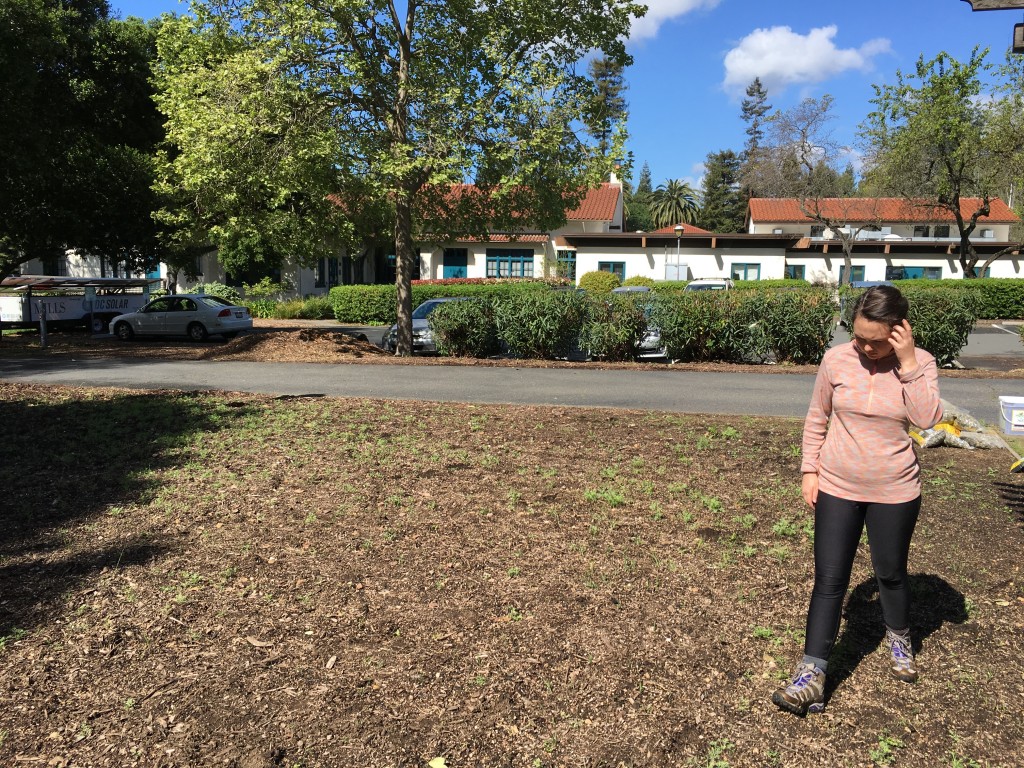
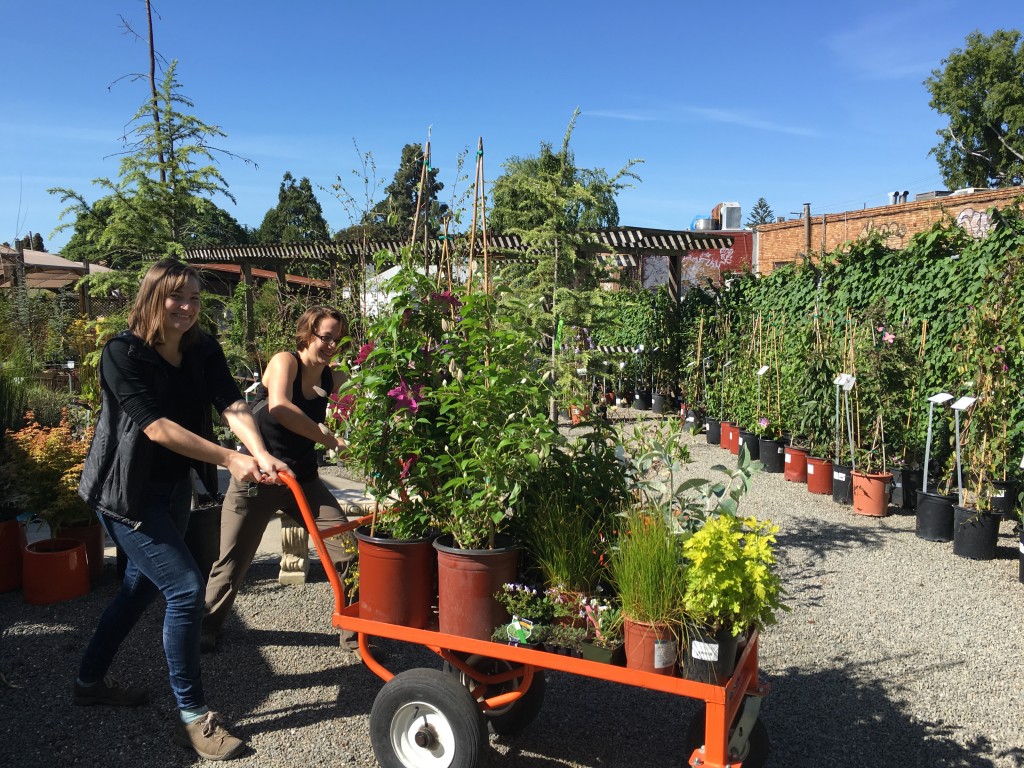
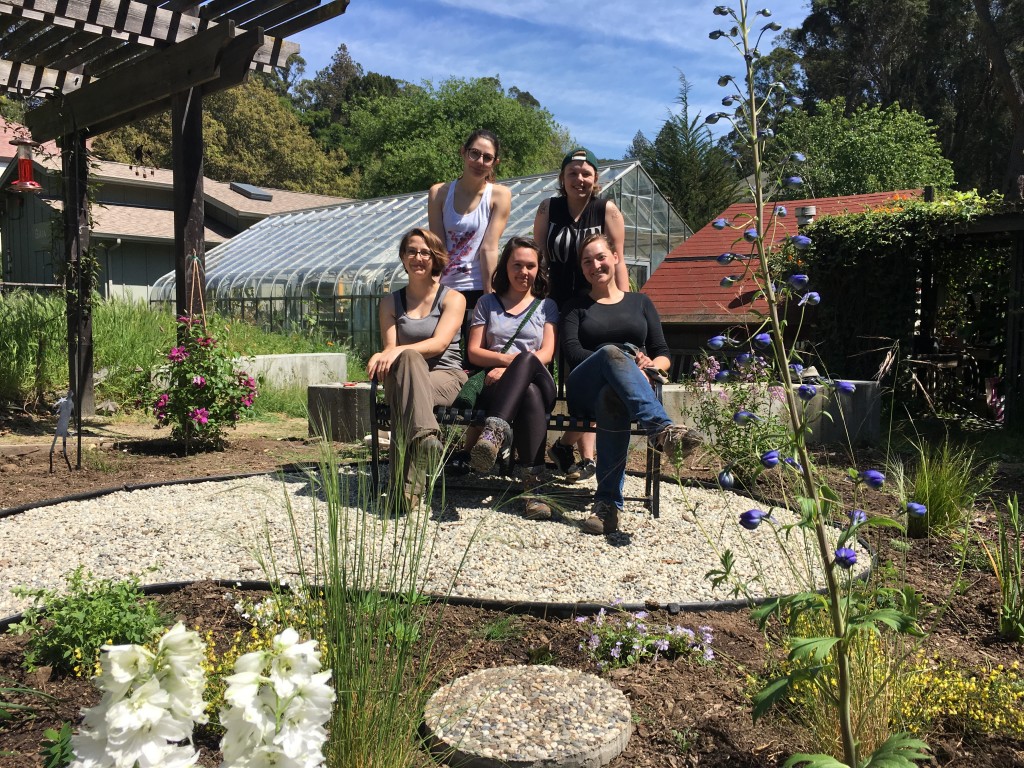
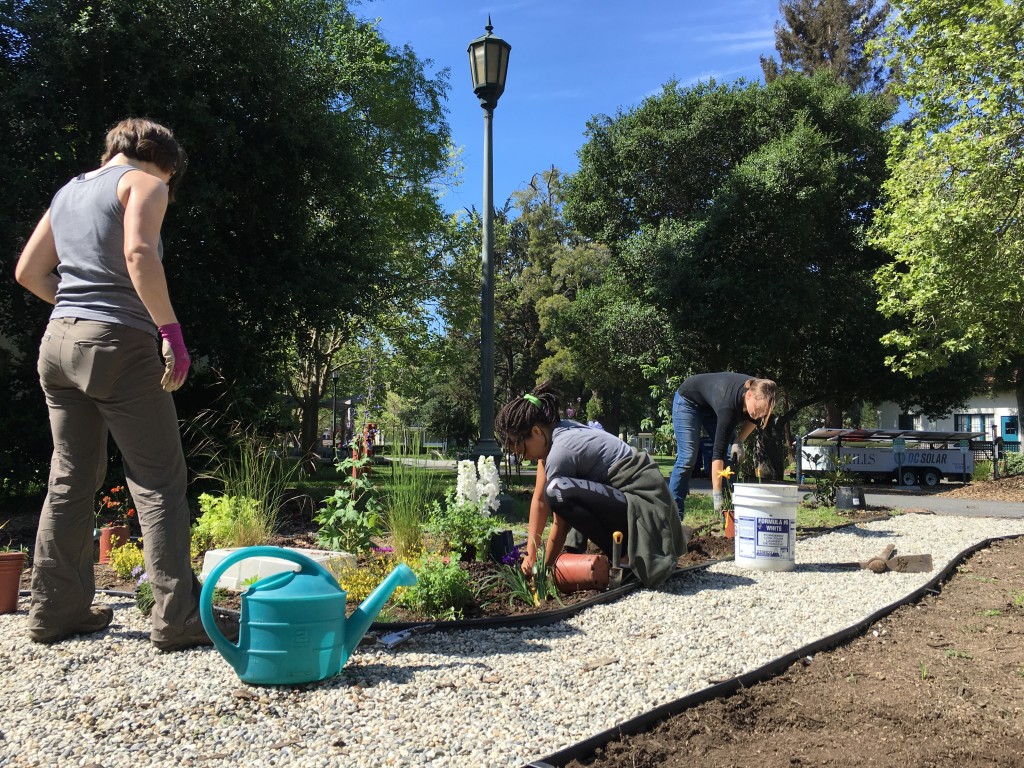
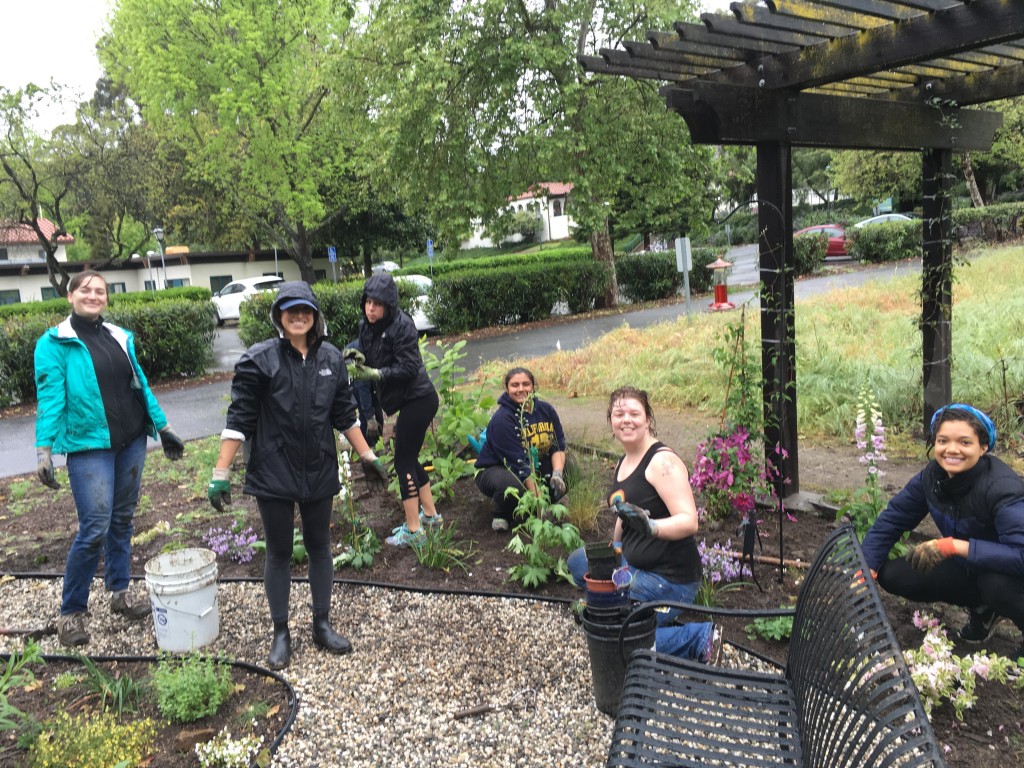
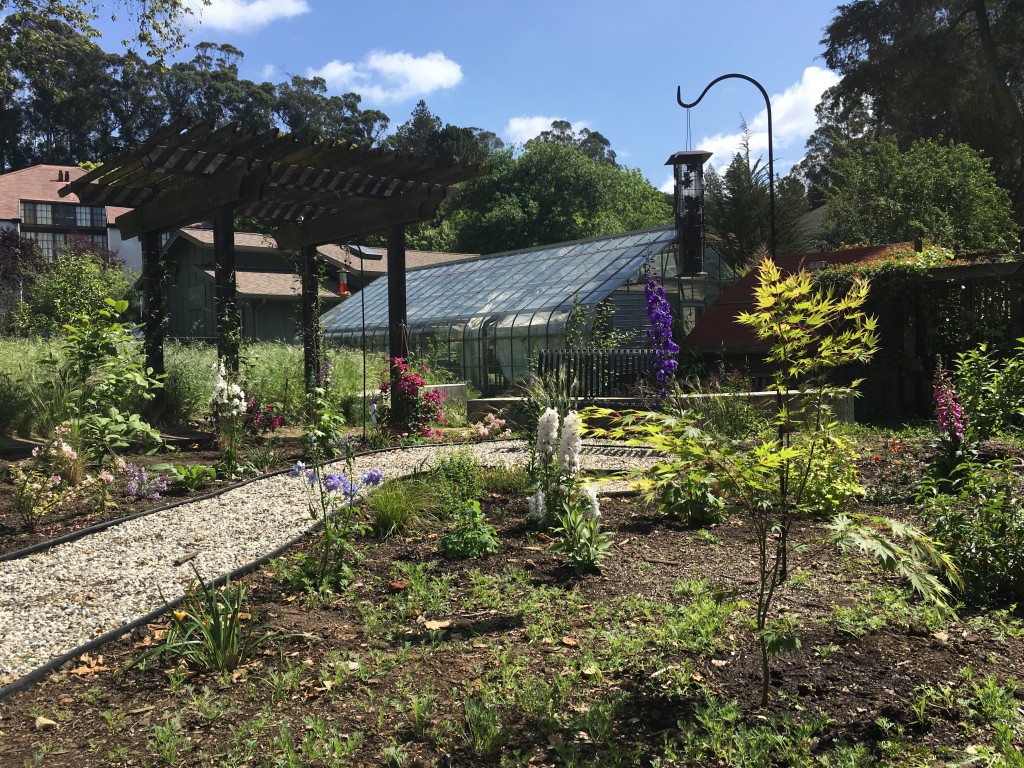
Top to bottom, left to right: before we began this project the space was 1000 sq ft of Bermuda grass which students removed by hand (!!); we had a lot of fun shopping for 100+ plants; Chloe Adnan, Emi Jerome, Andrea Kuftin, Brittany Burnett, Devon Thrumston after the first day of planting; planting, rain or shine; a view of the bench and two bird feeders after our second day of planting.
Some examples from our educational collection
The corpse flower (Amorphophallus titanum)
Thanks to the generosity of the UC Berkeley Botanic Garden, we have recently become the proud parents of a corpse flower (Amorphophallus titanum), so-named because of the stench produced by its bloom. It makes the largest flowering structure (an inflorescence can reach 3 m in height) and the largest leaf in the world. Our plant, nicknamed Persephone, is currently producing a leaf that is more than 1.5 m tall.
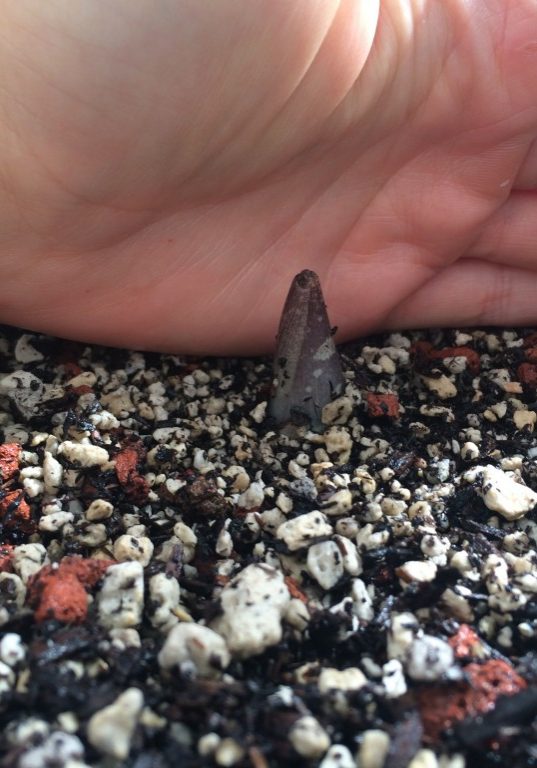

Persephone's leaf when it first emerged on October 5th (left) and again 8 weeks later on December 5th (right). Although it looks like a small tree, this is actually a single leaf and is on the verge of breaking out of its pot.
Convergent evolution, adaptations to aridity
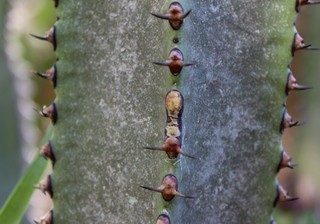
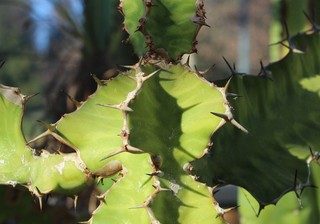
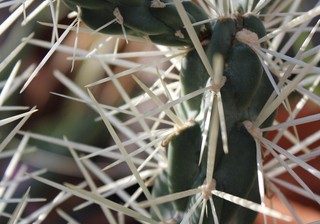
Although these plants looks alike, they are only distantly related to one another and evolved similar traits independently in response to the challenges of living in arid environments. This phenomenon is called convergent evolution. The plants shown at left and center are Euphorbias from Africa and the one on the right is a cactus from North America.
The living fossil
Welwitschia mirabilis is found only in the Namib Desert along the southwestern coast of Africa, one of the driest deserts in the world. It is an ancient species and the only surviving member of the order Welwitschiales. It produces only two long, strap-like leaves over the course of its 1,000+ year lifespan and stores water in its taproot. These cone-bearing plants are closely related to pines. It is dioecious, meaning that each plant is either male or female. We do not yet know the sex of any of our three plants because they are not yet old enough to reproduce.

California natives, adaptive radiations
The Garden contains an impressive collection of California natives, particularly genera that are classic examples of adaptive radiations. We have a large collection of Arctostaphylos, including the extremely rare A. franciscana (below left), of which only a handful of individuals persist and is nearly extinct in the wild, and a collection of Ceanothus, including the rare C. foliosus var. vineatus.
